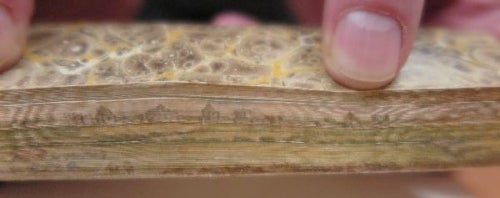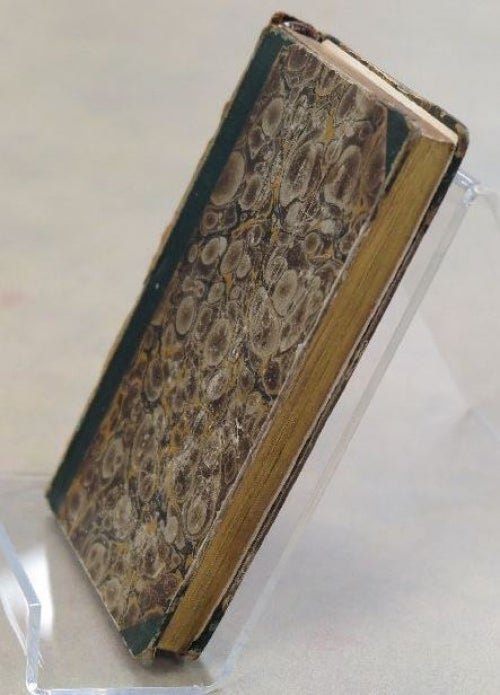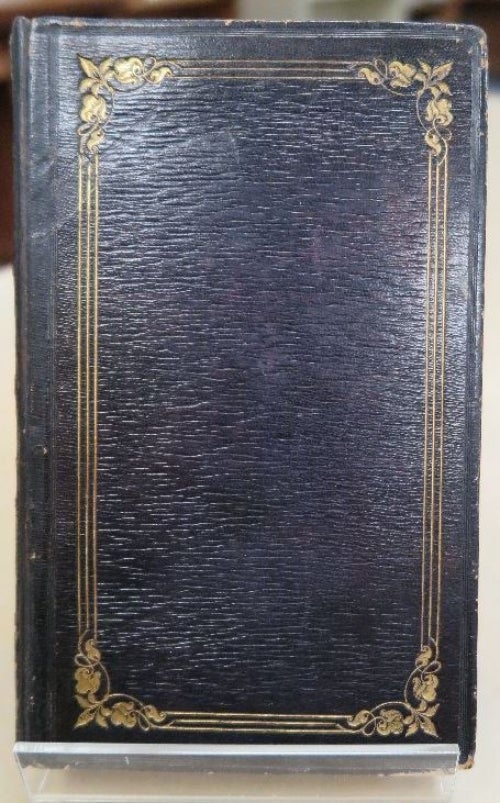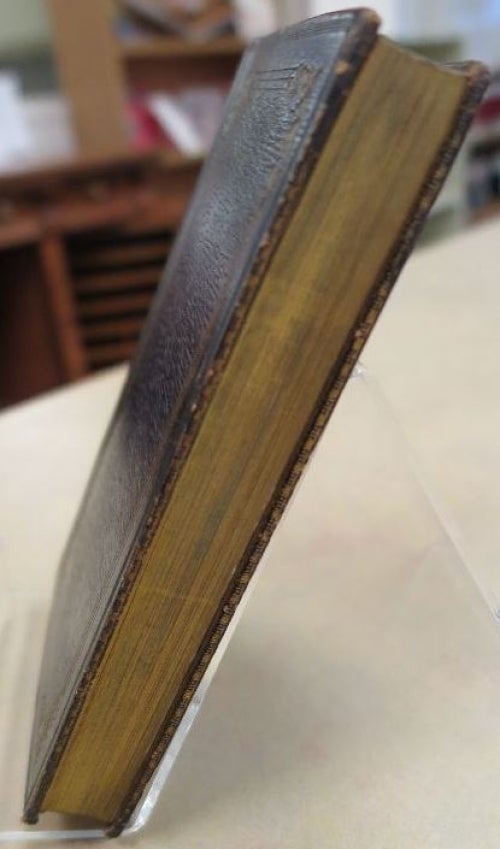Dana Porter Library, first floor
University of Waterloo Library
Waterloo, Ontario N2L 3G1
519-888-4567 x42619 or x42445
A fore-edge painting is one done on the edges of a book's pages, so that the painting is only visible when the pages of the book are fanned.
Special Collections & Archives holds three books with fore-edge paintings, A sentimental journey through France and Italy by Laurence Sterne, published in London in 1790 (call number A0213), Sketch of the present state of the island of Sardinia by W.H. Smyth, published in London in 1827 (call number F21575), and The history of Rasselas, Prince of Abyssinia : a tale, by Samuel Johnson, published in London in 1818 (call number F1023).
Today, we feature two of these books, Sardinia and Rasselas. Unfortunately, it's difficult to photograph these books, and the images below don't do the images justice. Why not come in and check out the real thing with your own eyes?
Thank you to Nick Richbell, whose thumbs appear in many of the photos below.
The history of Rasselas, Prince of Abyssinia : a tale
Samuel Johnson (1709-1784), also known as Dr Johnson, was an English poet, essayist, moralist, literary critic, biographer, editor, and lexicographer. He has been described as "arguably the most distinguished man of letters in English history" (Oxford Dictionary of National Biography) In 1755, he published his Dictionary of the English Language, which would remain perceived as the pre-eminent English dictionary, until the Oxford English Dictionary began to be published, in 1888.
The History of Rasselas, Prince of Abissinia tells the story of Rasselas, son of the King of Abyssinia (modern-day Ethiopia), shut up in a beautiful valley, "till the order of succession should call him to the throne". He grows bored of the place, and escapes with his sister Nekayah, her attendant Pekuah, and his poet-friend Imlac. They plan to see the world and search for happiness, but after some time traveling in Egypt, they perceive the futility of their search and return to Abyssinia.
The book was immediately popular, and did much to help cement Johnson's reputation.
This side view of the book shows no hint of the artwork within.

This scene has been tentatively identified as the city of Oxford, in England.
Sketch of the present state of the island of Sardinia
Admiral William Henry Smyth (1788-1865) was an English naval officer, hydrographer, astronomer, and numismatist. He constructed a very large number of charts of the European and African coasts of the Mediterranean, which continued to be used by the British Royal Navy until the mid 20th century.
In 1824, he published some of his results in Memoir descriptive of the resources, inhabitants, and hydrography of Sicily and its islands; his Sketch of the present state of the island of Sardinia followed in 1828.
Smyth was a fellow of the Royal Society, the Society of Antiquaries, and the Royal Astronomical Society; a founding member of the Royal Numismatic Society and the Royal Geographical Society; and was honorary or corresponding member of at least three-quarters of the literary and scientific societies of Europe.
Our copy of Sketch of Sardinia has a double fore-edge painting, so that a different image is visible depending on which way the pages are fanned. The paintings were added to the book circa 1948-1950.
A pretty front cover.
Again, the side view gives no hint as to what's inside.

The pages fanned in one direction display Blenheim Palace in England.

The pages fanned in the other direction display Alnwick Castle in England.
Next post: History 250 class visit to Special Collections & Archives
Previous post: WS101, meet Elizabeth Smith Shortt







